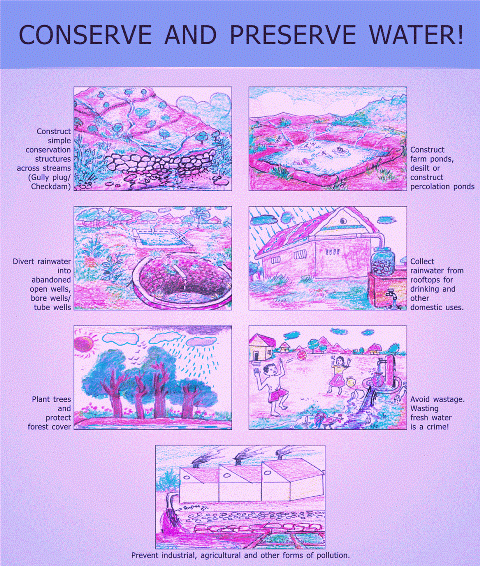The anatomy of a disaster
V. JAYANTH
The tsunami respected no boundaries and threw upcomplex issues relating to disaster management
Disasters, irrespective of how severe they are, are generally localised events. The earthquake in Latur. The plague in Gujarat. The 94 cm of rainfall on a single day in Mumbai.
What happened on December 26, 2004, however, had no boundaries. In the damage it inflicted on this country, it was a truly national disaster.
Most of peninsular India, as well as the Andaman and Nicobar islands, was engulfed by the tsunami that Sunday morning. From Kanyakumari to mid-Andhra Pradesh in the east to parts of the Kerala in the west, the coastline was struck by giant tidal waves, of a scale never witnessed in recent history. The word "tsunami", confined earlier to science books and specialised articles, became the stuff of common parlance.
The waves were triggered by an earthquake, with its epicentre in the sea off the coast of Sumatra, that measured 8.6 on the Richter scale. Hence, tidal waves lashing coastlines from Indonesia to Africa, resulting in a gruesome toll of about three lakh lives.
Indonesia was the worst hit, accounting for nearly half the lives lost. But southern India was badly affected too, with the Andaman Islands and Tamil Nadu taking the worst beating. Over 10,000 bodies were recovered and close to 5,000 declared "missing" and presumed dead. About 75 per cent of the lives lost were those of women and children. In terms of human suffering and loss of property and assets, it was one of the worst calamities the country has recorded.
India stood tall
In monetary terms, the damage was estimated at about Rs. 11,544.91 crores — Rs. 342.67 crores in Andhra Pradesh, Rs. 2,371.02 crores in Kerala, Rs. 4,528.66 crores in Tamil Nadu, Rs. 466 crores in Pondicherry and Rs. 3,836.56 crores in the Andaman and Nicobar islands.
At a time when most of the tsunami-hit countries affected were unable to come to terms with reality and launch relief and restoration works, India stood tall in taking concerted action. Prime Minister Manmohan Singh politely told the international community that India could manage its own relief and rehabilitation programme; however, it would welcome technological support to meet the challenges. He told the nation: "I have been overwhelmed by the generous response of our people to efforts to raise funds for tsunami relief and rehabilitation. The flow of contributions to the `Prime Minister's National Relief Fund' so far has been unprecedented. These funds have helped in providing relief and succour to the victims of the disaster. Our Government is committed to rebuilding lives and livelihoods and offering a new ray of hope to the survivors of this disaster."
The Centre took a few and immediate steps like getting the defence forces to the affected States to assist in the rescue and relief operations, organising logistic support to the States to move relief material, and releasing Rs. 700 crores to the States for relief operations. Of course, it was left to the State Governments to respond to the immediate challenges. And most of the immediate problems were social and psychological — of food, clothing and shelter. It was at the peak of winter and interim arrangements had to be carried out swiftly.
Turning to NGOs
Once the immediate problems were tackled, the Central and State Governments had to deal with the more complex issues of livelihood and permanent housing. These posed major challenges. Traditionally, the fishing community, which was the worst hit by the tsunami, did not believe in either exploring options of banking or insurance. They raised the capital for fishing vessels through private channels and never bothered to insure them. So the loss of catamarans, boats and other motorised vessels meant a permanent loss to them.
The Centre came up with a "Rajiv Gandhi Rehabilitation Package", with a separate component for the restoration of livelihood. But the catch was that it involved the beneficiary going to the bank, securing a grant-cum-loan and also insuring the vessel. A majority of the fishermen rejected the scheme and turned instead to the non-government organisations which had moved to the affected districts and launched their own initiatives. Fortunately, the district administrations worked out a coordination effort that involved all the NGOs (especially in a State like Tamil Nadu).
As the damage in Andhra Pradesh and Kerala was limited, it was that much easier to organise relief and subsequently rehabilitation. In the Andaman islands, Tamil Nadu and Pondicherry, it was and still is a daunting task. The North-East monsoon has played spoilsport and delayed the completion of some projects. Basically, it is the resilience of the community affected, the untiring efforts of the administration and NGOs and the indomitable spirit of people that have helped overcome this major challenge.
Early warning system
The Government has now decided to set up a Tsunami Early Warning System in the Indian Ocean on its own, hoping to commission it by 2007 at a cost of Rs. 125 crores. A Disaster Management Authority has been set up at the national level, headed by the Prime Minister and will be constituted at the State and District levels before long. But the Centre has also to ensure that the funds promised are released to the States and all planned projects completed at least over the next two years. This is with the objective of bringing out a qualitative transformation in the lives of the coastal population that was crippled by the tsunami.
Copyright © 2005, The Hindu







No comments:
Post a Comment